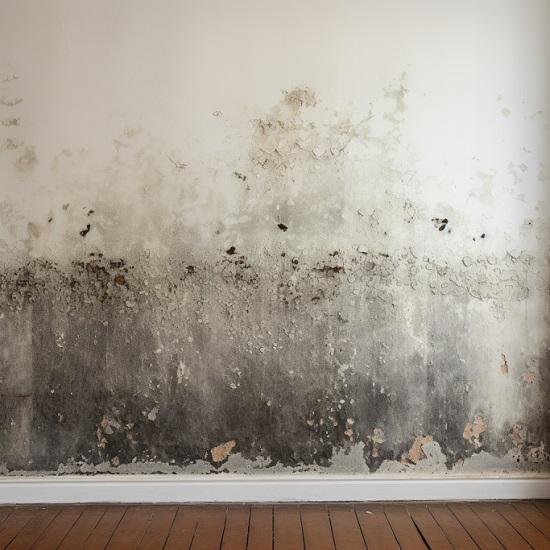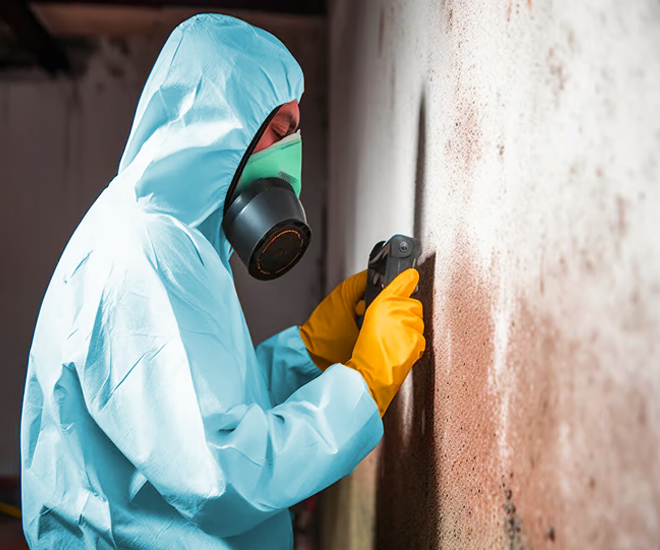After Mold Remediation Techniques for Clean Rooms
Wiki Article
Key Steps for Successful Post Mold Remediation
Efficiently finishing mold removal is a multifaceted procedure that needs focus to detail and adherence to details procedures. These steps not just verify the success of the remediation initiatives however additionally add to avoiding future mold and mildew growth.Examination of Treated Areas
Upon conclusion of the mold removal process, a comprehensive examination of the treated locations is vital to guarantee the performance of the remediation initiatives. This evaluation acts as a vital action in the post-remediation phase to confirm that the mold and mildew removal and cleaning procedures were effective in removing the mold invasion and recovering a secure indoor environment. The assessment needs to be conducted by qualified experts that have the experience to evaluate the remediated areas thoroughly.These consist of visual assessments to examine for any kind of indicators of mold and mildew development or water damages, wetness degrees to verify that the area is totally free and dry of excess moisture that can advertise mold and mildew re-growth, and air top quality screening to make certain that the interior air is secure to take a breath. In addition, the inspection may include utilizing specialized tools such as dampness meters and thermal imaging electronic cameras to spot covert mold and mildew or moisture pockets that might lead to future mold and mildew troubles if left uncontrolled.

Wetness Control Measures
Reliable wetness control measures are necessary for preventing mold and mildew development and preserving a healthy interior setting. To accomplish this, it is critical to attend to sources of wetness within the structure. Correct ventilation is essential to controlling humidity levels. Setting up exhaust fans in shower rooms and kitchen areas can assist remove excess wetness. In addition, using dehumidifiers in moist locations can help in reducing humidity levels, making it harder for mold and mildew to thrive.Frequently examining and maintaining the structure's outside can likewise avoid moisture breach. Post Mold remediation cleaning. Guaranteeing that rain gutters are clear, downspouts direct water far from the structure, and the roof remains in excellent problem can aid protect against water from permeating into the structure. Properly securing doors and home windows can likewise help keep moisture out
In cases where water damages occurs, timely activity is essential. Any type of spills or leakages should be cleaned and dried within 24-48 hours to stop mold and mildew growth. Utilizing wetness meters can aid spot hidden resources of water and guarantee thorough drying out. By executing these wetness control actions, the risk of mold and mildew returning can be significantly lowered, creating a healthier interior setting.
Correct Air Flow Assessment
An essential facet of making sure a healthy interior setting post mold removal is carrying out a detailed evaluation of the air flow system. Appropriate air flow analysis plays a crucial function in preventing future mold and mildew development and keeping air top quality within the affected area.Additionally, assessing the ventilation system consists of analyzing the circulation of air throughout the location to determine any locations of bad blood circulation where wetness and contaminants can gather. Appropriate air flow not just helps in regulating moisture levels yet also help in eliminating air-borne mold spores and other contaminants, therefore enhancing overall indoor air high quality. By addressing any air flow problems publish mold removal, home proprietors can produce a healthier and extra comfortable environment for passengers while lowering the risk of mold and mildew re-infestation.
Cleansing and Sanitation Protocols
To guarantee extensive mold removal, precise adherence to particular cleaning and sanitation procedures is imperative. Cleaning up and sanitation procedures play an important duty in the post-mold removal phase to stop the recurrence of mold growth and make sure a risk-free and healthy and balanced setting.After the first cleaning, detailed disinfection of the influenced areas is needed to eliminate any kind of remaining mold and mildew spores and inhibit their proliferation. This action is critical in preventing the spread of mold to various other components of the property. In addition, implementing safety nets such as applying mold and mildew preventions and preserving appropriate ventilation can help decrease the risk of future mold problems. By complying with rigorous cleaning and sanitation procedures, homeowner can ensure the effective obliteration of mold and mildew and develop a healthy and balanced indoor atmosphere for passengers.
Surveillance and Maintenance Plan
Carrying out a regular surveillance and upkeep strategy is crucial for ensuring the long-lasting effectiveness of mold removal initiatives. As soon as mold remediation is finished, it is important to develop a monitoring timetable to review the success of the removal process.Additionally, developing a maintenance plan is crucial to avoid future mold and mildew concerns. This plan may consist of actions such as dealing with plumbing leaks, improving air flow, and controlling indoor humidity degrees. Regular maintenance not just helps in preventing mold however also adds to keeping a healthy indoor environment. It is suggested to document all surveillance and maintenance activities to track progression and ensure consistency in the maintenance of the remediated locations. By carrying out a detailed surveillance and maintenance strategy, the threat of mold re-emergence can be significantly lowered, promoting a clean and secure living or working setting.
Verdict
In verdict, effective article mold and mildew remediation involves extensive evaluation of treated areas, implementation of moisture control actions, analysis of correct air flow, adherence to cleaning and disinfection methods, and facility of a surveillance and maintenance plan. These key steps are important to make certain that mold and mildew development is efficiently eliminated and protected against from reoccuring in the future. By complying with these guidelines, home owners can keep a risk-free and healthy environment for occupants.Upon conclusion of the mold removal process, an extensive inspection of the dealt with locations is crucial to guarantee the performance of the removal efforts. These consist of visual analyses to inspect for any type of signs of mold and mildew growth or water damages, wetness degrees to confirm that the location is dry and cost-free of excess moisture that could advertise mold re-growth, and air high quality screening to make certain that the indoor air is risk-free to breathe. Furthermore, the evaluation may include using specialized tools such as dampness meters and thermal imaging video cameras to identify covert mold and mildew or moisture pockets that might lead to future mold and mildew issues if left untreated. By addressing any type of air flow issues publish mold and mildew remediation, property owners can develop a healthier and a lot more comfy environment for passengers while reducing the danger of Post Mold Remediation Report mold and mildew re-infestation.

Report this wiki page